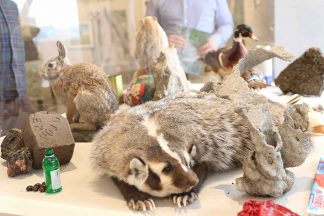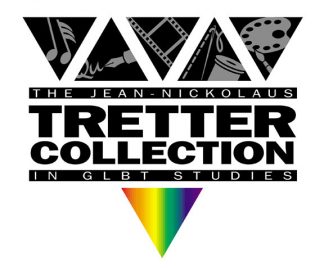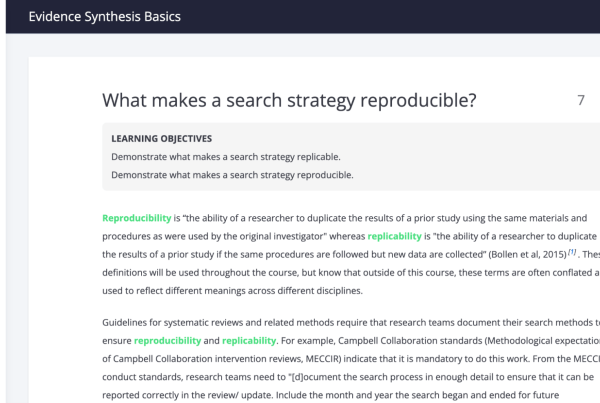
Artist Gudrun Lock explains the Shoreham Yards habitat.
“It’s kind of delightful to see someone make something different” with materials from the John R. Borchert Map Library, says Ryan Mattke. Artist Gudrun Lock’s unusual point of view, gathering of visual materials both old (aerial maps of the Shoreham Yards rail facility) and new (underwear she buried and then excavated), and the contributions of naturalists, musicians, community activists, and students from Minneapolis College of Art and Design come together into something completely new, unsettling, and embracing in the Weisman Art Museum.
“The Nature of Shoreham Yards” exhibit, on view only until May 15, opens up questions about how we use land and value land, says Mattke, who is the University of Minnesota’s Map & Geospatial Information Librarian.
“How do urban planners decide some spaces are worthless?” he says. Shoreham Yards, a railway and trucking facility located north of the Twin Cities campus, about a half-mile from the east bank of the Mississippi River, harbors trains, trucks, unhoused people, animals, and birds. It is owned by Canadian Pacific Railway. Mattke says: “It is a purposely neglected space that gets used.”
Ties to the Mapping Prejudice project
Jamila Boudlali, an urban planning student in the Hubert H. Humphrey School of Public Affairs, was among the Mapping Prejudice team who visited the exhibit. Her focus is on housing, so becoming a graduate student intern for Mapping Prejudice is “a perfect fit,” she says.
When explaining to friends, family, and fellow students that many residential property deeds of the first part of the 20th century had racial covenants, restricting ownership or even occupancy to white people, Boudlali says she often encounters disbelief. “What are you talking about? Are you serious?”
Yes, she is serious, and with the Shoreham Yards art exhibit, she recognizes a profound similarity to the work of unearthing deeds with racist covenants: Each effort reveals in the landscape hidden histories of the Twin Cities. (Mattke, too, belongs to the Mapping Prejudice team as Co-Director.)
A renewed future?

Detail of animals and materials from the Shoreham Yards exhibit
Artist Lock says she has been in conversation for two years about this land, what it harbors now, and “how we might re-imagine this landscape.” She focuses on the buffers of the active intermodal train-and-truck site, she says: “the trees and grass that surround it, that are also owned by Canadian Pacific.” First purchased by the railroad in the 1880s, edges of the site were used as a dump in the 1980s.
Thus the property also hosts heavy metals and other pollutants, as well as crows, wood ducks, native plants, and badgers. Because of its proximity to the Mississippi River, Shoreham Yards is part of the local watershed.
Shoreham Yards is a living system to Lock and really to all of us — even if people have transformed it into a mess of a system. Yet with the help of her many collaborators and by examining Shoreham Yard’s past, Lock seeks ways to re-imagine the future for part of this site. Stop in to see what you might imagine.
__
The Weisman Art Museum is located on the East Bank of the Twin Cities campus. Admission is free; donations are appreciated. Hours are Wednesday , 10 a.m.-8 p.m., Thursday and Friday, 10 a.m.-5 p.m., and Saturday and Sunday 11 a.m.-5 p.m. Paid parking is available at WAM.




